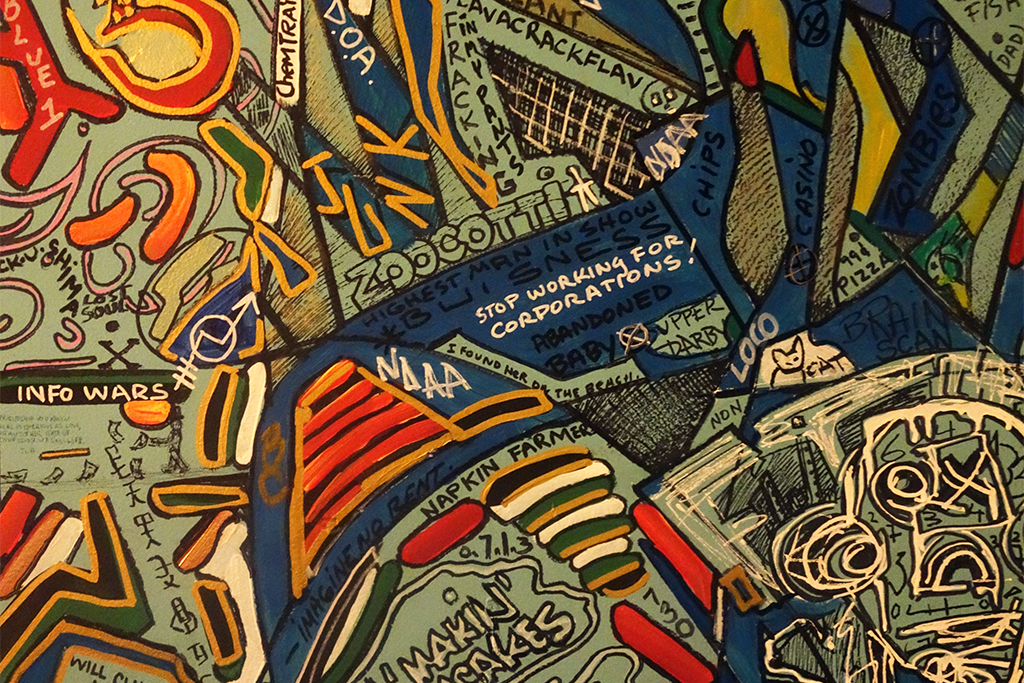
We are celebrating 15 years — and counting — of stories that are deeply researched and deeply felt, that build a historical record of what the city has been.
We are celebrating 15 years — and counting — of stories that are deeply researched and deeply felt, that build a historical record of what the city has been.

Graffiti on the wall at the Lower East Side’s C Squat. | Photo by Nick Normal via Flickr
In the 1980s and 90s, the Lower East Side of Manhattan was home to a squatting movement unlike any other in the United States. Drawing on their diverse radical and progressive roots, squatters claimed and occupied city-owned abandoned building with a winning combination: a Yippie sense of drama and fun, punk rock aggression and subcultural grit, and urban homesteaders’ earnest appeals to American values of self-sufficiency and initiative. When faced with eviction they learned how to build barricades and booby traps and drum up riots from their European counterparts, and each attempt to evict Lower East Side squatters from the late ‘80s on brought newly escalated police and squatter tactics. By the mid-1990s, the police were using tanks and helicopters and the squatters were overturning cars in the streets.
In 2002, after three years of secret negotiations, the city shocked everyone involved when it agreed to sell the remaining squatted buildings, for one dollar each, to a non-profit (UHAB – the Urban Homesteading Assistance Board) which would take out loans on the squatters’ behalf to renovate the buildings and bring them up to code. The former squats would then be converted to limited-equity low-income co-operatives and the renovation loans would become mortgages. Illegal squatters would thus be transformed into indebted homeowners, problematic unsellable buildings into low-income housing. This was easier said than done: by 2013, only five of the eleven buildings in the legalization deal had been converted into co-ops.
Join us at UnionDocs on January 15 for documentary work and discussion as we engage the histories and legacies of this fascinating moment.
Why Does the History of Squatting in NYC Matter?
Sunday, January 15, 2017
7:00pm
UnionDocs
322 Union Ave. Williamsburg
Brooklyn, NY 11211
Tickets are $10 and can be bought on the UnionDocs website or at the door.
Program
Ours to Lose: When Squatters Became Homeowners in New York City, ethnography, 2016, University of Chicago
An ethnography based on oral histories that tells the story of squatter’s long and complicated transition from illegal squatting to co-operative homeownership.
La Siembra del Hogar/Sowing Homes, multimedia, 2016
A multimedia ground mural at Extra Place alley in the Lower East Side, inspired by oral histories with squatters.
Jerry the Peddler, doc-in-progress
Meet Jerry. He’s been squatting on NYC’s Lower East Side for over 35 years. And he’s been at the center of a patchwork of hippies, yippies, punks & anarchists. Experience the world through Jerry’s eyes. And be warned: his organizing tools include weed, beer & psychedelic punk.
War in the Neighborhood, graphic novel, 1999
A 328 page graphic novel about the struggles over homelessness, gentrification, police brutality and human rights that raged in the area surrounding New York’s Tompkins Square park in the 1980s and 90s. It is a first hand account of the Squatters movement during which abandoned buildings were seized to make low income housing, and then had to be defended within a divided community.
Comics and Graphic Novels by Fly
Fly has been part of the LES Squat community starting in the late 80s. Since 1995 she began the UnREal Estate Project; documenting the LES Squatter Movement (and European Squats to a lesser extent) with photos, drawings and writing as well as compiling an Archive of printed matter and ephemera. Fly began working with Booklyn (a Brooklyn based Book Arts Collective) in the late 90s to collect and catalogue her extensive personal archive. In approximately 2011 Fly started working with Amy Starecheski continuing this work as well as compiling video taped oral histories of many of the original squatters.
Fly has done many slideshow history talks of the UnReal Estate Project on the east coast and west coast of USA as well as International Squatter Conferences in Rotterdam and Napoli. URE is also planned as a multi-volume book project; the first volume will be titled You Don’t Know Squat is currently in progress and will be co-edited by Fly-0 and Amy Starecheski.
The UnReal Estate Project contributors are members of a loosely defined collective known as U.R.E.L.I.C. aka the UnReal Estate Living Improvements Committee.
The views expressed here are those of the authors only and do not reflect the position of The Architectural League of New York.